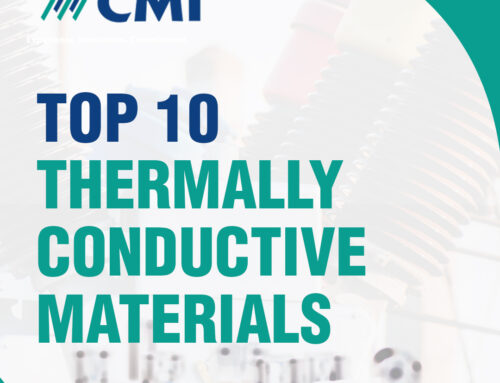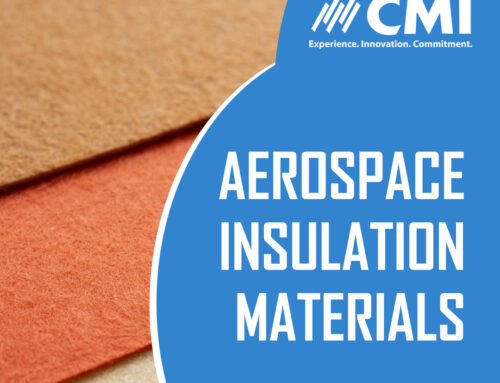Thermal conductivity is a critical property of materials that defines their ability to transfer heat. This characteristic is particularly important in building science, engineering, and several practical applications where heat transfer efficiency can affect everything, from energy conservation to system performance.
Moisture content within materials poses a significant variation in thermal conductivity, as the presence of water can dramatically change how well a material can conduct heat.

Understanding how moisture affects thermal conductivity is essential for accurate modeling and improved material design. For example, in construction, the moisture content in insulation materials can affect the thermal efficiency of a building envelope. Similarly, in the natural environment, soil moisture levels can influence the thermal gradients and, consequently, the energy balance of an area. Therefore, the impact of moisture on thermal conductivity is a topic of extensive study, with environmental and practical implications that extend to numerous fields like building science, engineering, and when handling materials at high temperatures.
Key Takeaways
- The transfer of heat energy in materials is significantly affected by their moisture content, impacting various applications.
- An accurate understanding of this interplay is crucial for material use and design.
- The role of moisture in the thermal properties of materials holds significant environmental relevance.
Basics of Thermal Conductivity

Thermal conductivity is critical to understanding heat transfer mechanisms in various materials. It directly influences how efficiently heat can pass through a substance.
Thermal Conductivity Fundamentals
Thermal conductivity, denoted by the symbol k, represents the ability of a material to conduct heat. It is quantified as the amount of heat (in watts) transferred through a meter cube of a substance for each Kelvin of the temperature gradient. In mathematical terms, thermal conductivity is defined by Fourier’s Law of Heat Conduction:
Fourier’s Law: [ q = -k nabla T ]
Where:
- ( q ) is the heat flux (W/m²),
- ( k ) is the thermal conductivity of the material (W/mK),
- ( nabla T ) is the temperature gradient (K/m).
Materials are categorized as good or poor conductors of heat based on their k value. For instance, metals like stainless steel and copper typically have high thermal conductivity, while plastics and gasses have much lower values. The microstructure of a material greatly affects its thermal properties – a well-ordered structure allows for more efficient heat transfer.
Role of Moisture in Heat Transfer
Moisture’s presence in materials alters their thermal conductivity. For instance, in many porous materials, water can fill the pore spaces, which enhances thermal conduction, as they replace air, a poorer conductor. Thus, the thermal conductivity of a dry material versus when it has a moisture content of 5% can vary significantly, with it reaching a lower value when dry.
For example, studies have shown that changes in the moisture content of geopolymers have a measurable impact on their thermal conductivity. When the moisture content is at 5%, the thermal conductivity can be up to 40.2% lower than when the system is devoid of water molecules. This reflects the clear influence that the presence of moisture can have on the thermal transfer capabilities of a substance.
Material Properties and Moisture Impact

The impact of moisture on the thermal properties of building materials, which are frequently subject to varying levels of humidity, can considerably affect thermal resistivity and energy efficiency.
Hydrophobic vs. Hygroscopic
Hydrophobic materials are designed to repel water, diminishing the impact of humidity on thermal conductivity. These materials maintain their insulation properties by preventing water absorption, which can otherwise increase thermal conductivity. On the other hand, hygroscopic materials naturally absorb moisture from the air. This trait, while useful in regulating indoor humidity, can lead to increased thermal conductivity as moisture content rises, potentially reducing the material’s insulative efficiency.
Porous Materials and Moisture Interaction
The interaction between porous materials and moisture is complex. Porosity allows for moisture to be either absorbed or repelled, depending on the material’s composition and surface coatings. For example, some porous materials with open-cell structures can absorb moisture, which leads to increased thermal conductivity as moisture levels rise, impacting the material’s insulating capability.
Microstructure Effects
The microstructure of a material influences how it interacts with moisture. Fine and intricate microstructures can impede fluid flow, reducing water ingress, while larger pores may facilitate it. This structural variation dictates the rate at which moisture is absorbed or transmitted, leading to implications for heat capacity and the transfer of thermal energy. Understanding a material’s microstructure helps predict its performance in varying humidity conditions.
Practical Applications

Understanding how moisture impacts thermal conductivity is crucial in various industries, leading to enhanced performance and energy efficiency.
Thermal Insulation Materials
In the construction industry, thermal insulation materials are essential for energy conservation. The presence of moisture can significantly alter the thermal conductivity of these materials. For example, increased moisture content can deteriorate the insulation properties of materials like fiberglass and foam. A precise understanding of this relationship is essential for optimizing the energy efficiency of buildings and can significantly contribute to energy-saving measures.
Soil Thermal Conductivity
Soil’s thermal conductivity is a key factor in geothermal engineering and agricultural applications. The moisture content of soil influences its thermal properties, affecting the performance of ground-source heat pumps and the temperature regulation of agricultural lands. Accurate knowledge in this area ensures better design of geothermal systems and can assist in the development of agriculture.
Food Processing and Storage
In the food industry, precise control of temperature is critical for both processing and storage. As moisture content changes, it impacts the thermal conductivity of food, affecting freezing rates, cooking processes, and storage conditions. Professionals in the field use this information to optimize operations and ensure food safety, as understanding the thermal properties influences the quality and preservation of food products.
Building Science

The thermal performance of a building’s envelope is influenced significantly by moisture levels, which can result in altered thermal conductivity, impacting both energy efficiency and the longevity of building materials.
Building Envelope Performance
The building envelope consists of the physical barriers that control the flow of heat, air, and moisture between the interior and exterior environments. A key goal in building science is ensuring that envelope performance maintains thermal efficiency and durability. Factors such as temperature, moisture content, and density of insulation materials influence the thermal conductivity. Insulation materials with optimal performance can significantly reduce energy consumption; their efficiency is often evaluated under various temperature and humidity conditions. Studies show that environmental factors like air velocity and aging can also affect insulation performance.
Wetting and Drying Cycles
Wetting and drying cycles are critical in assessing the longevity of building materials. These cycles refer to the absorption of moisture and subsequent drying, which can lead to changes in building physics parameters such as thermal conductivity and density. Moisture typically enters the building envelope through diffusion, capillary action, or air transport, and can be expelled or redistributed by the drying process. Effective design must account for these moisture dynamics to prevent degradation of materials and loss of thermal resistance. Techniques such as hygrothermal analysis are applied to study and predict the effects of these cycles on building materials. It’s important to note that repeated wetting and drying may induce permanent changes in insulation materials, which can negatively impact building envelope performance over time.
Environmental Considerations
When examining the thermal properties of insulation materials, it’s imperative to consider environmental factors, such as climate change, which can significantly affect these properties over time.
Climate Change Impact on Thermal Properties
Climate change is expected to alter temperature patterns and humidity levels, directly influencing the thermal conductivity of building materials. As global temperatures rise, the capacity for moisture content in the air increases, leading to greater potential for condensate formation within insulation systems. This moisture can result in significant changes in the materials’ properties. For example:
- Increased Moisture Content: The presence of moisture has been found to spike the thermal conductivity of commonly used insulators. A study highlighted that mineral wool’s thermal conductivity could surge by up to 446% with a 15% increase in moisture content.
- Variability of Conductivity: Insulating materials like fiberglass are subject to changes in their thermal properties with varying environmental conditions. The effective thermal conductivity can fluctuate with factors like moisture ingress in different climates, challenging the notion of a fixed conductive value.
The repercussions of climate change also extend to the durability of insulation materials. They could face faster degradation due to the thermal stress from more frequent cycling between dry and wet conditions. This is exemplified in the nonlinear relationship between the moisture content and the effective thermal conductivity of building materials, indicating a complex interaction between porosity and environmental parameters.
Furthermore, anticipated changes in external temperatures and humidity levels must be a focal point for future research and development of building materials to ensure long-term efficacy and sustainability in an era where climate change remains a pressing concern.
Frequently Asked Questions
In thermal conductivity, the ability of a material to transfer heat can be significantly influenced by its moisture content. This section explores how variations in humidity and water content affect the thermal properties of various materials.
How does humidity influence the thermal conductivity of a material?
When air’s humidity increases, so does the thermal conductivity of hygroscopic materials that absorb moisture, enhancing their capacity to transmit heat due to the water molecules’ efficient heat transfer.
What is the impact of water content on the thermal conductivity of wood?
The thermal conductivity of wood increases with water content because water conducts heat more effectively than dry wood constituents.
In what ways does soil moisture level affect its thermal conductivity?
Soil with higher moisture levels generally demonstrates elevated thermal conductivity, as water within the soil pores carries heat more readily than air, resulting in better overall heat transmission.
Can the density of a substance alter its ability to conduct heat?
Yes, the density of a material can influence its thermal conductivity; denser materials typically contain more matter and electrons in a given volume, which can facilitate heat flow if the structure of the material supports efficient thermal motion.
How does the presence of water in a material change its heat transfer properties?
Materials imbued with water usually experience an increase in thermal conductivity since water is a more effective conductor of heat than most liquid counterparts and dry materials.






